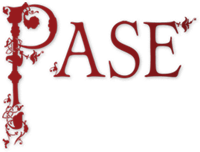Table of Contents
Top of page
Name
Summary
Distribution Map
Property List
Profile
Bibliography
Bottom of page
Leofhild 2
Leofhild ‘of Roding’ (Essex), fl. 1066
Male
DWP
4 of 5
Summary
Leofhild 2 had a tiny manor in west Essex TRE assessed at 3 virgates and with a value of 30s, which she held as a dependent tenant of Barking Abbey; her lord by commendation was Esger.Distribution map of property and lordships associated with this name in DB
List of property and lordships associated with this name in DB
Holder 1066
| Shire | Phil. ref. | Vill | DB Spelling | Holder 1066 | Lord 1066 | Tenant-in-Chief 1086 | 1086 Subtenant | Fiscal Value | 1066 Value | 1086 Value | Conf. | Show on Map |
|---|---|---|---|---|---|---|---|---|---|---|---|---|
| Essex | 30,3 | Abbess Roding | Leuild | Leofhild 'of Roding' | Ælfgifu, abbess of Barking | Geoffrey de Mandeville | Geoffrey Martel | 0.75 | 1.50 | 2.00 | B | Map |
| Totals | ||||||||||||
Profile
Leofhild 2’s tiny manor was one of the sixteen estates called Roding in DB and straddling the valley of the River Roding, a tributary of the Thames, in west Essex. Her manor ‘was in Barking Abbey’ TRE and she could not alienate it from there, which shows that Leofhild was the abbey’s dependent tenant and also identifies her manor as that later known as Abbess Roding. By 1086 the manor was in the hands of a subtenant of Geoffrey de Mandeville (Geoffrey 5), although the abbey managed to regain the estate subsequently (Bassett 1997: 33). Geoffrey received many estates that were held TRE by Esger and he used this to acquire Abbess Roding as well, although DB notes that Leofhild was ‘only the man of Geoffrey’s antecessor’; in other words, Esger had been Leofhild’s lord by commendation and held no rights over her land or tenure.The workforce for Leofhild’s manor was provided by a villan, two bordars and a slave; she had one plough on her demesne land and her peasant households had a half-plough for theirs. Although DB does not mention livestock it is likely that there was also a pastoral aspect to the manor’s economy because there were 15 acres of meadow, which is more than would be required simply for the oxen of the plough-teams. Although DB does not say so it is also possible that the church already existed as well, because its dedication to St Edmund suggests a pre-Conquest origin (Bassett 1997: 31).
No other person called Leofhild is recorded in DB as a landholder TRE and there is no reason to associate Leofhild 2 with any other person or estate. The occurrences of a DB estate at Liffildeuuela (Old English Lēofhilde-welle ‘Leofhild’s spring’ (Reaney 1935: 446-7)), close to the holding of Leofcild 7 and about 21 miles to the north-east of Abbess Roding, are nothing more than coincidences.
Bibliography
Bassett 1997: S. R. Bassett , ‘Continuity and fission in the Anglo-Saxon landscape: the origins of the Rodings (Essex)’, Landscape History 19 (1997), 25-42
Reaney 1935: P. H. Reaney, The Place-Names of Essex (Cambridge, 1935)
